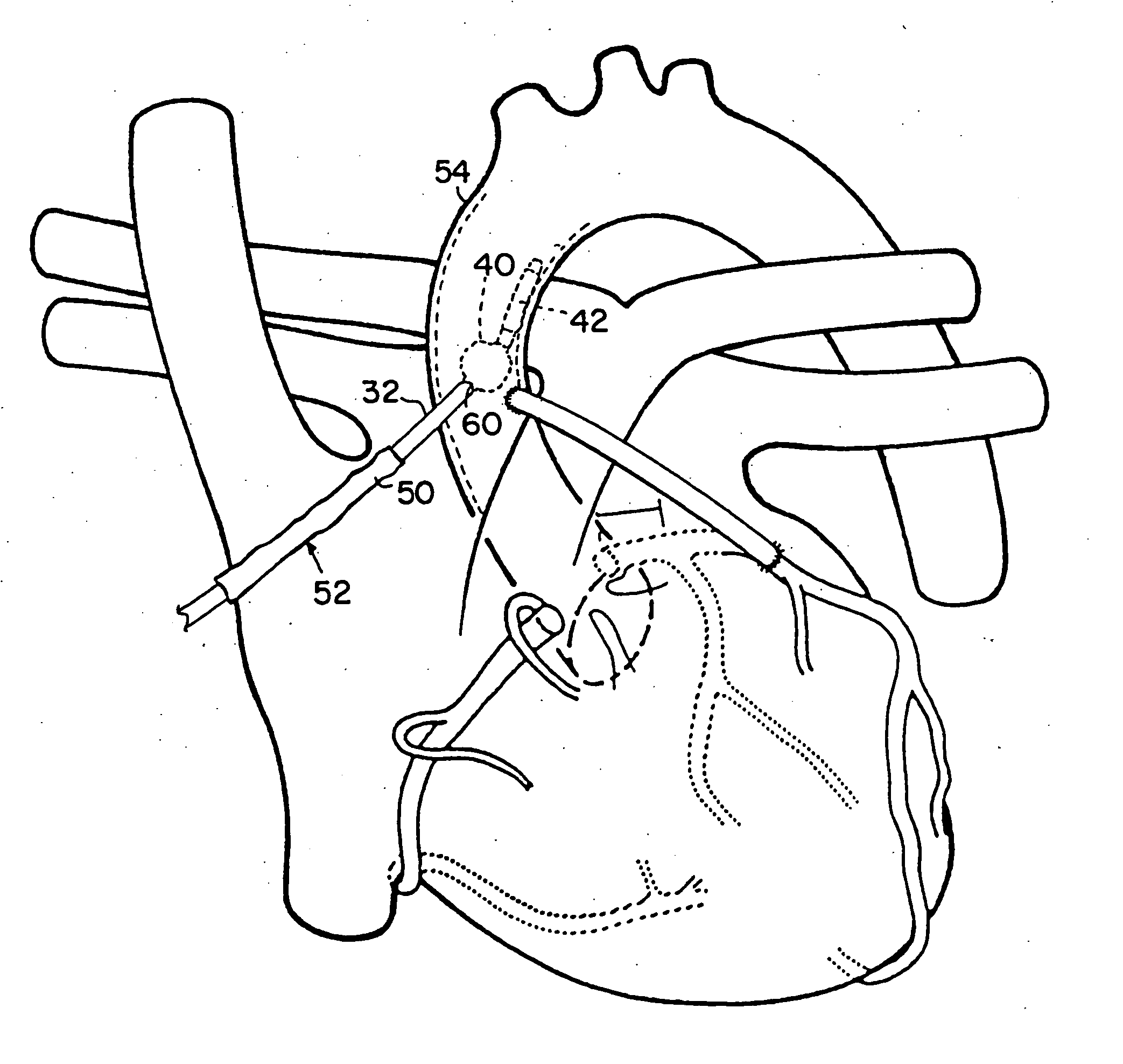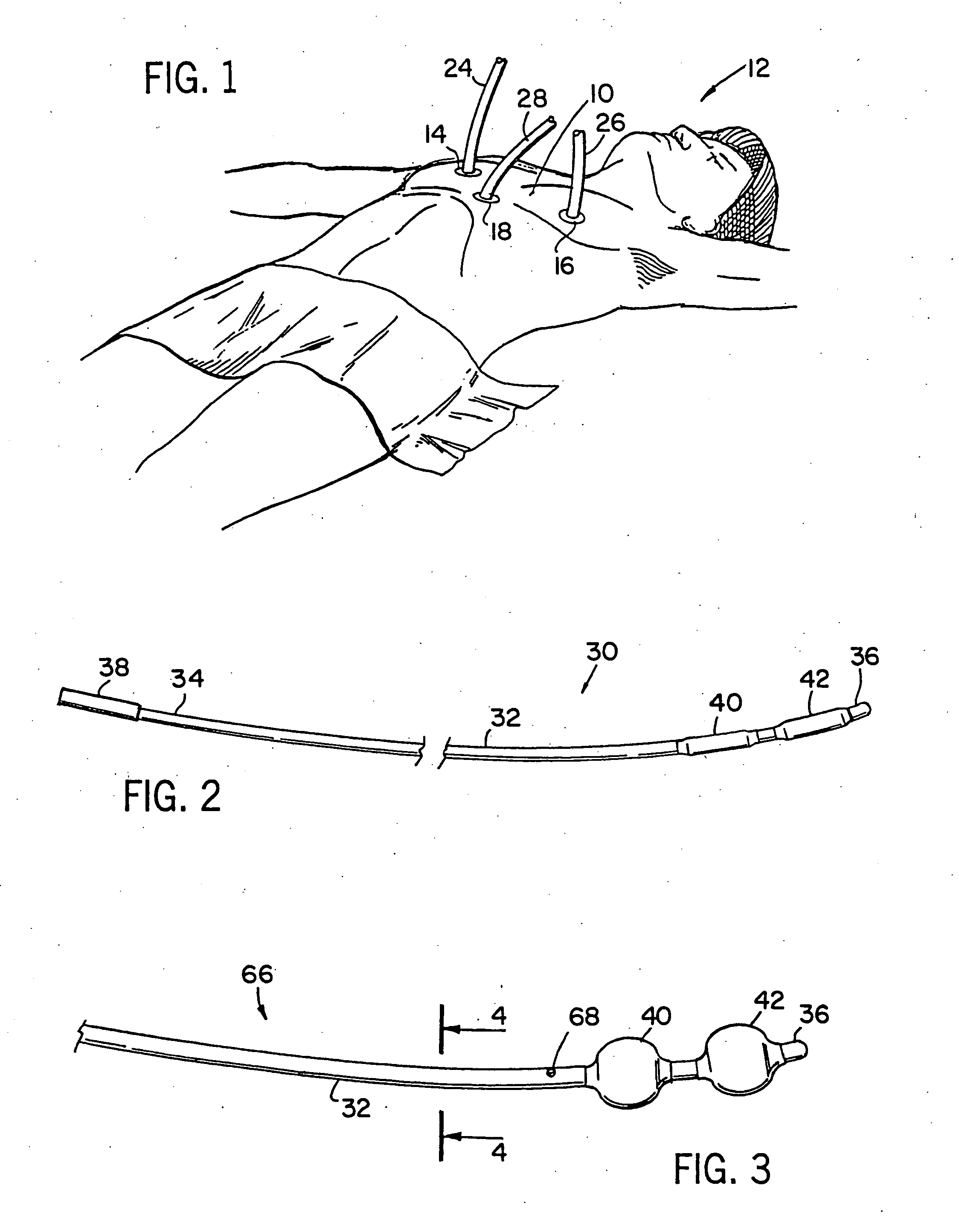Intravascular balloon occlusion device and method for using the same
a technology of occlusion device and balloon, which is applied in the field of intravascular balloon occlusion device, can solve the problems of increasing the patient's blood loss during the surgical procedure, flooding the surgical field with blood, etc., and achieves the effect of keeping the surgical field clear
- Summary
- Abstract
- Description
- Claims
- Application Information
AI Technical Summary
Benefits of technology
Problems solved by technology
Method used
Image
Examples
Embodiment Construction
[0023] In minimally invasive surgical procedures, such as that shown in FIG. 1, multiple small incisions are made in the chest wall for receipt of surgical instruments. For example, two relatively small incisions are made in the chest wall 10 of a patient 12 at different, small interstitial rib positions, while a third incision is made just below the sternum. A first trocar 14 is inserted into the first incision at one of the interstices while a second trocar 16 is inserted into the second incision at another of the interstices. Preferably, the first and second incisions are made on opposite sides of the sternum. A third trocar 18 is inserted into the incision just below the sternum. Each trocar is conventional in nature and has a central aperture (not shown) formed therein. The central aperture is adapted to receive one of a variety of surgical instruments such as an endoscope, electro-cautery pen and the like for performing the minimally invasive surgical procedures. First, second...
PUM
 Login to View More
Login to View More Abstract
Description
Claims
Application Information
 Login to View More
Login to View More - R&D
- Intellectual Property
- Life Sciences
- Materials
- Tech Scout
- Unparalleled Data Quality
- Higher Quality Content
- 60% Fewer Hallucinations
Browse by: Latest US Patents, China's latest patents, Technical Efficacy Thesaurus, Application Domain, Technology Topic, Popular Technical Reports.
© 2025 PatSnap. All rights reserved.Legal|Privacy policy|Modern Slavery Act Transparency Statement|Sitemap|About US| Contact US: help@patsnap.com



